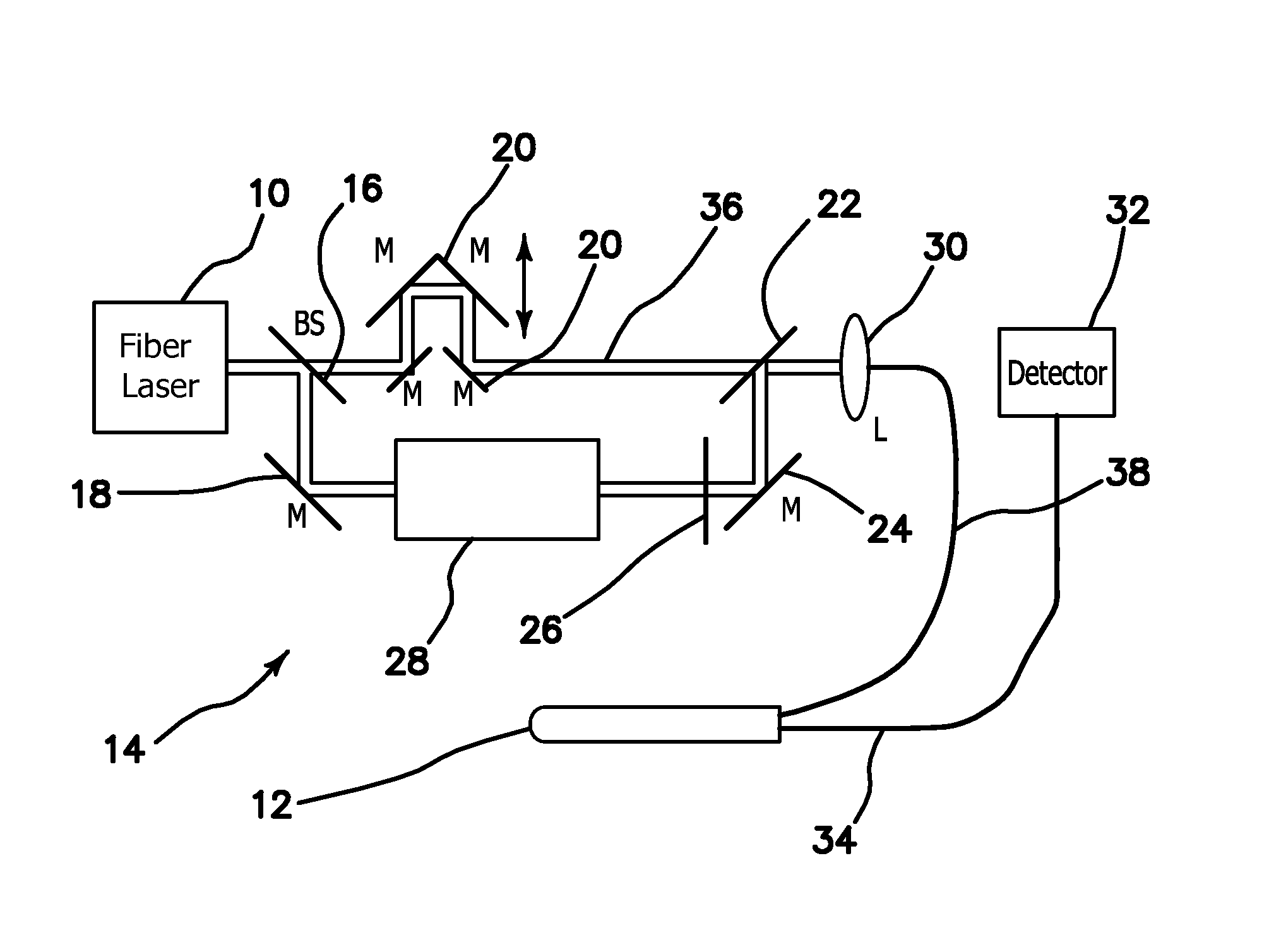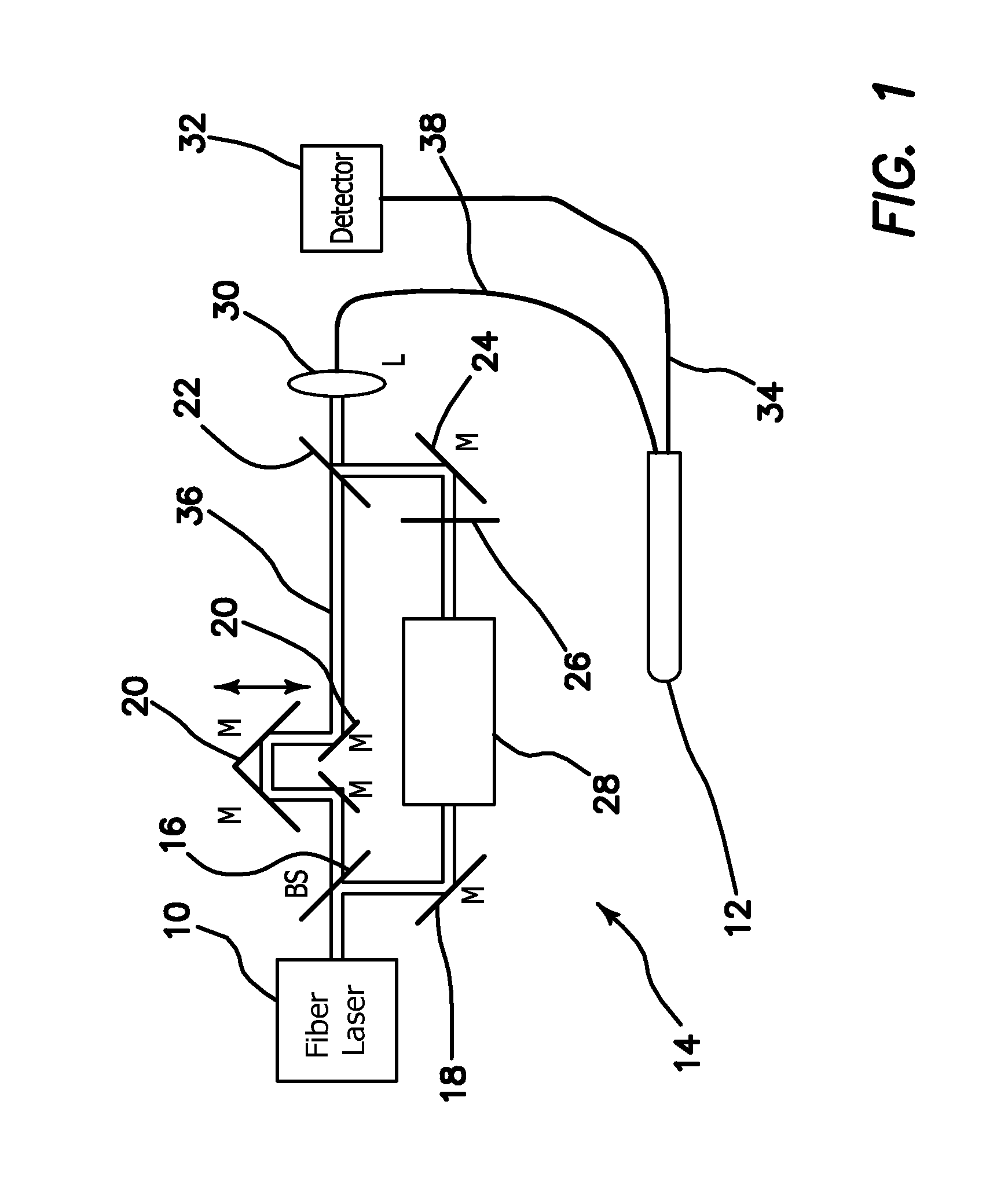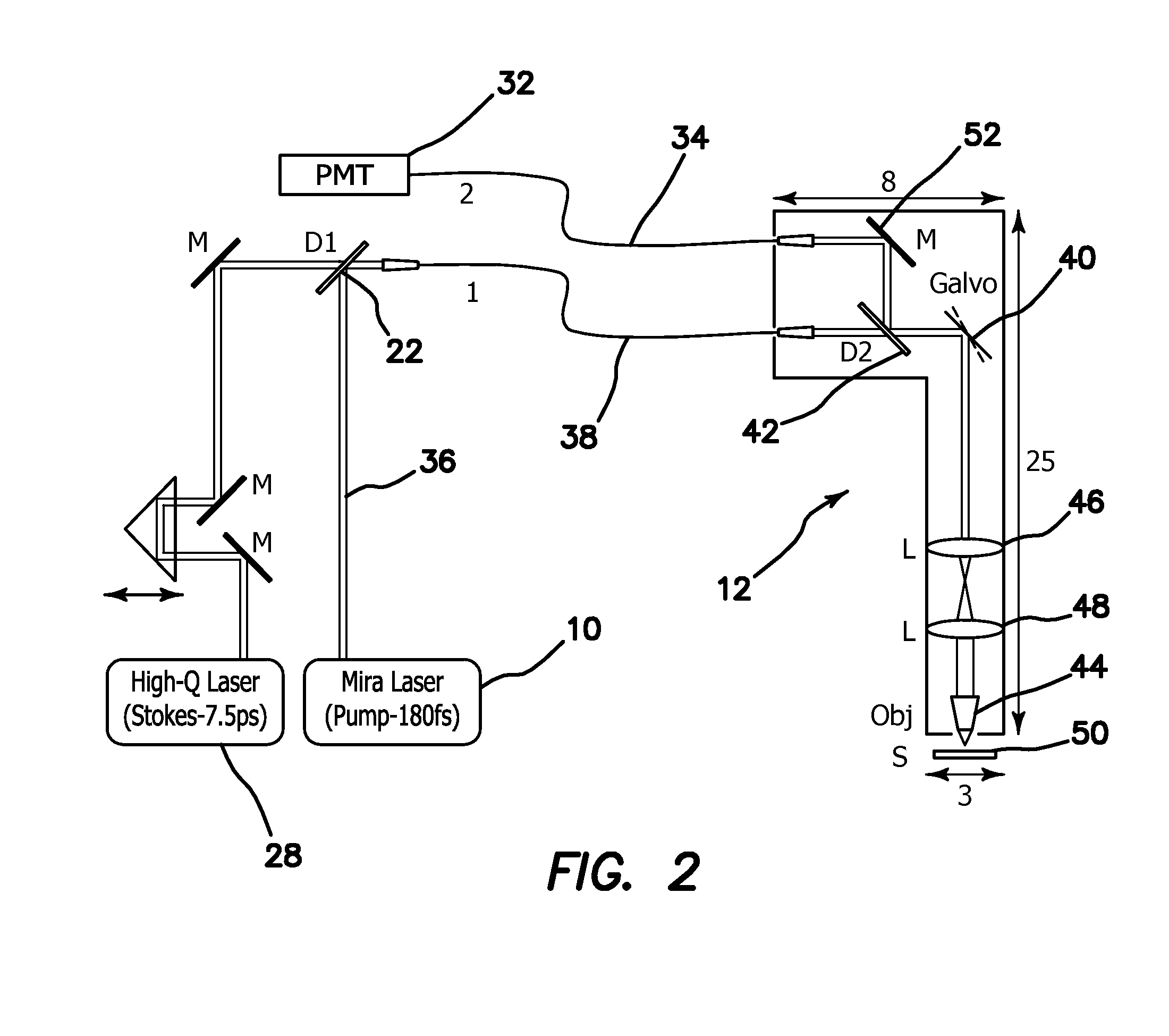System and method for efficient coherence anti-stokes raman scattering endoscopic and intravascular imaging and multimodal imaging
a coherence and anti-stokes raman technology, applied in the field of efficient coherence anti-stokes raman scattering endoscopic and intravascular imaging and multimodal imaging, can solve the problems of unsuitable fiber-delivered or endoscopic probes that enable car imaging, severely complicating the interpretation of images, etc., and achieves compact devices, convenient use, and improved image interpretation
- Summary
- Abstract
- Description
- Claims
- Application Information
AI Technical Summary
Benefits of technology
Problems solved by technology
Method used
Image
Examples
Embodiment Construction
[0063]The illustrated embodiments of the invention provide a method for eliminating the problem of fiber-generated anti-Stokes radiation. The various embodiments of the method is based on effectively filtering the fiber-generated anti-Stokes radiation before the excitation beams are focused onto the sample. The CARS signal generated in the sample is then collected by either a different portion of the delivery device (e.g. inner clad of a double clad fiber) or by a different fiber. The illustrated embodiments of the invention describe a scheme for a fiber-based multiphoton probe that is optimized for CARS imaging.
[0064]The illustrated embodiments of the invention include two aspects. First, it includes the filtering of the spurious FWM / CARS signal generated in the fiber. This aspect was not recognized in any prior art on multiphoton fiber probes. Suppression of the FWM / CARS / CARS signal is, however, crucial to CARS imaging. We achieved suppression of the FWM / CARS signal in various way...
PUM
 Login to View More
Login to View More Abstract
Description
Claims
Application Information
 Login to View More
Login to View More - R&D
- Intellectual Property
- Life Sciences
- Materials
- Tech Scout
- Unparalleled Data Quality
- Higher Quality Content
- 60% Fewer Hallucinations
Browse by: Latest US Patents, China's latest patents, Technical Efficacy Thesaurus, Application Domain, Technology Topic, Popular Technical Reports.
© 2025 PatSnap. All rights reserved.Legal|Privacy policy|Modern Slavery Act Transparency Statement|Sitemap|About US| Contact US: help@patsnap.com



